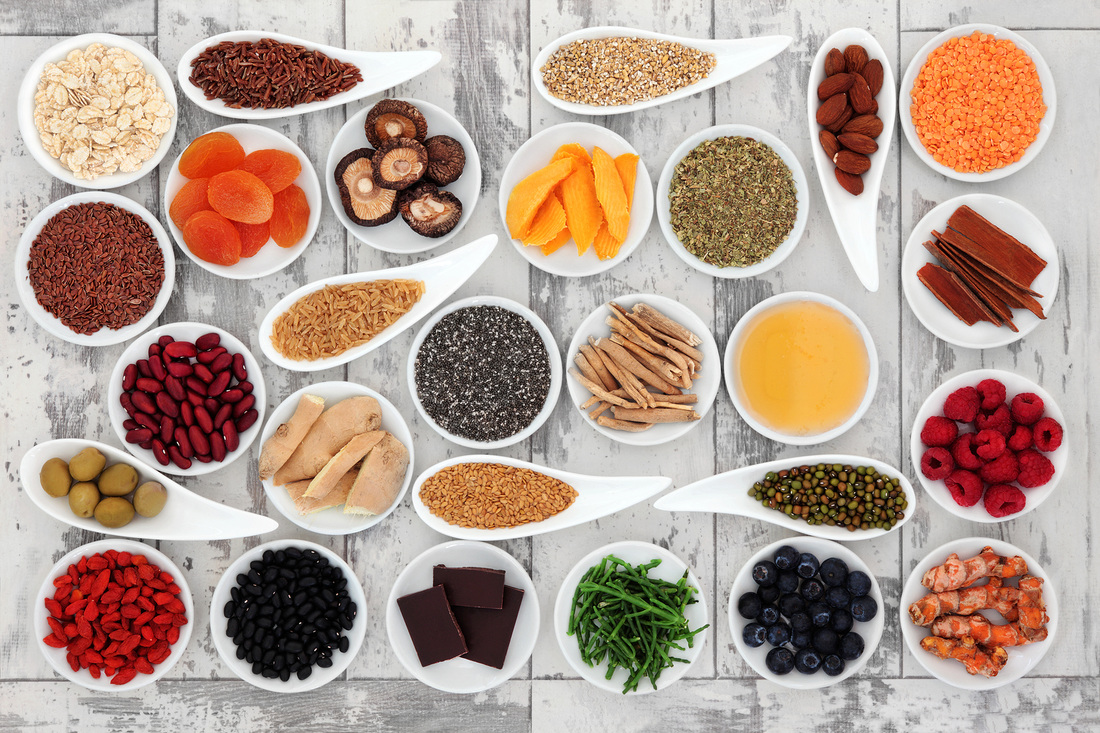Superfoods


‘Superfoods’ is a popular term often used by the media recently. But what exactly does it mean and how can it help you improve your health?
The Macmillan Dictionary defines ‘superfood’ as a food that is considered to be very good for your health and that may even help some medical conditions. The Oxford Dictionary definition states a superfood is “a nutrient-rich food considered to be especially beneficial for health and well-being. Some health organizations define the term itself as a marketing ploy, but they also promote a healthy diet as a main prevention tool for many diseases. So it’s reasonable to think that superfoods may be a great addition to your diet, with little to lose (even if they are half as effective as their marketers claim, you still benefit from them). Cancer Research UK warn that superfoods are often promoted as having an ability to prevent or cure diseases, including cancer; they caution, “you shouldn’t rely on so-called ‘superfoods’ to reduce the risk of cancer. They cannot substitute for a generally healthy and balanced diet.” We can therefore conclude that superfoods as part of a healthy diet are definitely the way to go! Drinking five gallons of cola and hoping a superfood will fix the damage later is a whole different approach!
Here are some superfoods worth adding to your diet:
Chlorella and Wakame – they are full of protein, amino acids, vitamins and minerals. According to some studies, a diet supplemented with chlorella may reduce high blood pressure, lower serum cholesterol levels, accelerate wound healing, and enhance immune function. Other recent studies have found that fucoxanthin present in wakame can help burn fatty tissue. It has high levels of sodium, calcium, iodine, thiamine and niacin.
Berries – Acai berry, Blueberries, Strawberries, Goji berry (wolfberry), Citrus, Coconuts. Berries are rich in antioxidants, anti-inflamatories and vitamins A, C, B1 and B3.
Broccoli, Brussels sprouts, Chinese cabbage, kale, watercress, spinach, sauerkraut – they are high in vitamin C and soluble fiber and contain multiple nutrients and phytochemicals. Sauerkraut is a source of vitamins C, B, and K. The fermentation process increases the bioavailability of nutrients rendering sauerkraut high in calcium and magnesium. It’s a very good source of dietary fiber, folate, iron, potassium, copper and manganese. Not to mention low in calories!
Beans, lentils, peanuts, raw cocoa, and sweet potatoes (yams): Raw cocoa, for example, has anti – aging properties and promotes cardiovascular health. It can be consumed as a yummy bar of organic chocolate.
Mackerel, salmon and sardines – great sources of healthy fats essential for wellbeing and youthfulness.
Seeds and whole grains
Chia seeds, flax seeds, hemp seeds, amarantus, quinoa – they are excellent sources or good carbs and seeds in particular, are high in fiber and have anti cancerous properties.
Oils
Coconut oil, flaxseed oil, olive oil – similarly to fish they provide healthy fats and have anti-cancer properties. Be careful with this one and use sparingly!



